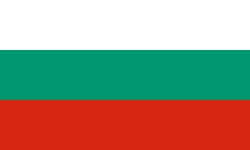Rezá Geráí
| Rezá Geráí Mohammadrezá Geráí | |
|---|---|
 | |
| Osobní informace | |
| Rodné jméno | محمدرضا گرایی |
| Datum narození | 25. července 1996 (28 let) |
| Místo narození | Šíráz, Írán |
| Stát | |
| Výška | 178 cm |
| Hmotnost | 70 kg |
| Rodina | Alí Geráí (bratr) |
| Sportovní informace | |
| Kategorie | lehká váha |
| Zápasnický styl | zápas řecko-římský |
| Údaje v infoboxu aktuální k srpnu 2024 | |
| Přehled medailí | ||
|---|---|---|
| zlato | Tokio 2020 | řecko-římský do 67 kg |
| Mistrovství světa v zápasu řecko-římském | ||
| zlato | Oslo 2021 | lehká váha |
| stříbro | Bělehrad 2022 | lehká váha |
| bronz | Bělehrad 2023 | lehká váha |
Mohammad Rezá Geráí (* 25. července 1996 Šíráz) je íránský zápasník – klasik, olympijský vítěz v lehké váze z Tokia 2020.
Sportovní kariéra
Zápasení se aktivně věnuje od 14 let společně se starším bratrem Alím. Specializuje se na řecko-římský styl. V íránské mužské reprezentaci se prosazuje od roku 2017 ve váze do 66 (67) kg.
Výsledky
| Turnaj | 2016 | 2017 | 2018 | ||||||||||||||||||
|---|---|---|---|---|---|---|---|---|---|---|---|---|---|---|---|---|---|---|---|---|---|
| 20 | 21 | 22 | |||||||||||||||||||
| -60 | -66 | -67 | |||||||||||||||||||
| Olympijské hry | — | ||||||||||||||||||||
| Mistrovství světa | — | úč. | |||||||||||||||||||
| Asijské hry | 3. | ||||||||||||||||||||
| Mistrovství Asie | — | — | — | ||||||||||||||||||
| MS juniorů | úč. | ||||||||||||||||||||
Odkazy
Reference
Související články
- Zápas v Íránu
Externí odkazy
 Obrázky, zvuky či videa k tématu Rezá Geráí na Wikimedia Commons
Obrázky, zvuky či videa k tématu Rezá Geráí na Wikimedia Commons - Výsledky Rezy Geráího uni-leipzig.de
Média použitá na této stránce
Flag of Iran. The tricolor flag was introduced in 1906, but after the Islamic Revolution of 1979 the Arabic words 'Allahu akbar' ('God is great'), written in the Kufic script of the Qur'an and repeated 22 times, were added to the red and green strips where they border the white central strip and in the middle is the emblem of Iran (which is a stylized Persian alphabet of the Arabic word Allah ("God")).
The official ISIRI standard (translation at FotW) gives two slightly different methods of construction for the flag: a compass-and-straightedge construction used for File:Flag of Iran (official).svg, and a "simplified" construction sheet with rational numbers used for this file.
Olympic Rings without "rims" (gaps between the rings), As used, eg. in the logos of the 2008 and 2016 Olympics. The colour scheme applied here was specified in 2023 guidelines.
Olympic Rings without "rims" (gaps between the rings), As used, eg. in the logos of the 2008 and 2016 Olympics. The colour scheme applied here was specified in 2023 guidelines.
Autor: F l a n k e r, Licence: CC BY-SA 2.5
Flag of the Kingdom of Sardinia (1851-1861) and of the Kingdom of Italy (1861-1946). Use: Civil flag and ensign. In a governmental or a military context, the crowned version (see Crowned version) was always used (as State flag and naval ensign).
Autor: F l a n k e r, Licence: CC BY-SA 2.5
Flag of the Kingdom of Sardinia (1851-1861) and of the Kingdom of Italy (1861-1946). Use: Civil flag and ensign. In a governmental or a military context, the crowned version (see Crowned version) was always used (as State flag and naval ensign).
Finská vlajka
Flag of Hungary, from 6 November 1915 to 29 November 1918 and from August 1919 until mid/late 1946.
this is the flag of the Soviet Union in 1936. It was later replaced by File:Flag of the Soviet Union (1955-1980).svg.
(c) I, Cmapm, CC BY-SA 3.0
The flag of the Soviet Union (1955-1991) using a darker shade of red.

(c) I, Cmapm, CC BY-SA 3.0
The flag of the Soviet Union (1955-1991) using a darker shade of red.

Variant version of a flag of Japan, used between January 27, 1870 and August 13, 1999 (aspect ratio 7:10).
Flag of Romania, (21 August 1965 - 22 December 1989/officialy 27 December 1989).

Construction sheet of the Flag of Romania as depicted in Decree nr. 972 from 5 November 1968.
- l = 2/3 × L
- C = 1/3 × L
- S = 2/5 × l
Flag of Romania, (21 August 1965 - 22 December 1989/officialy 27 December 1989).

Construction sheet of the Flag of Romania as depicted in Decree nr. 972 from 5 November 1968.
- l = 2/3 × L
- C = 1/3 × L
- S = 2/5 × l
Flag of the Socialist Federal Republic of Yugoslavia (1946-1992).
The design (blazon) is defined in Article 4 of the Constitution for the Republic of Yugoslavia (1946). [1]
Flag of the Socialist Federal Republic of Yugoslavia (1946-1992).
The design (blazon) is defined in Article 4 of the Constitution for the Republic of Yugoslavia (1946). [1]
Bundesdienstflagge (Flag of the federal authorities of Germany). Under German law, federal states, municipalities, institutions or private persons are not allowed to use this flag.
Georgian flag in Pantone MS.





























